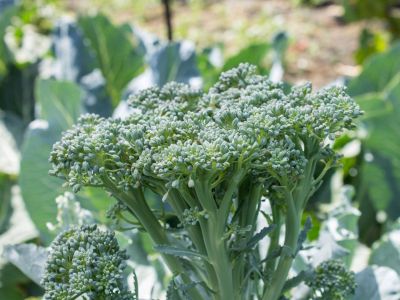The flavorful, nutrient-rich vegetable isn’t difficult to grow in full sunlight and moderately fertile, well-drained soil. Read on and learn how to grow this broccoli variety.
How to Grow Destiny Broccoli
Start seeds indoors five to seven weeks ahead of time or start with small Destiny broccoli plants from a nursery or garden center. Either way, they should be transplanted into the garden two to three weeks before the last frost in your area. You can also plant this variety by seed directly in the garden two to three weeks before the last average frost in your area. Prepare the soil by digging in a generous amount of organic matter, along with a general-purpose fertilizer. Plant the broccoli in rows 36 inches (approx. 1 m.) apart. Allow 12 to 14 inches (30.5-35.5 cm.) between rows. Spread a thin layer of mulch around the plants to retain soil moisture and squelch growth of weeds. Soak the broccoli plants once every week, or more if the soil is sandy. Try to keep the soil evenly moist but never waterlogged or bone dry. Broccoli is likely to be bitter if the plants are water stressed. Remove weeds when they’re small. Large weeds rob moisture and nutrients from the plants. Fertilize broccoli every other week, beginning three weeks after transplanting into the garden. Use an all-purpose garden fertilizer with a balanced N-P-K ratio. Watch for typical pests such as cabbage loopers and cabbage worms, which can be picked off by hand or treated with Bt (bacillus thuringiensis), an organic bacterium that occurs naturally in soil. Treat aphids by blasting them off plants with a hose. If that doesn’t work, spray the pests with insecticidal soap spray. Harvest Destiny broccoli plants when the heads are firm and compact, before the plant flowers.
